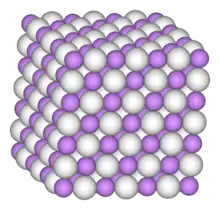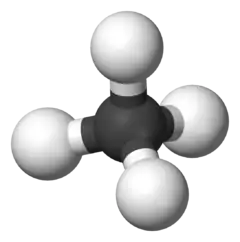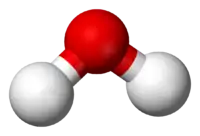Polysulfane
A polysulfane is a chemical compound of formula H2Sx, where x > 1, although sometimes disulfane, H2S2 is excluded.[1][2][3] Polysulfanes consist of unbranched chains of sulfur atoms terminated with hydrogen. Compounds containing 2–8 concatenated sulfur atoms have been isolated, longer chain compounds have been detected, but only in solution. H2S2 is colourless, higher members are yellow with the colour increasing with the sulfur content. Even a trace of alkali will cause chemical decomposition, and containers need to be treated with acid to remove any traces of alkali.
In the chemical literature the term polysulfanes is sometimes used for compounds containing −(Sn)−, e.g. organic polysulfanes R−(Sn)−R.
Since sulfur is a chalcogen, polysulfanes can be classed as hydrogen chalcogenides.
Chemistry and properties
Polysulfanes are thermodynamically unstable with respect to decomposition (disproportionation) to H2S and sulfur:
- H2Sn → H2S + (n−1)/8 S8
However, the production of polysulfide ions from S2− and S is thermodynamically favourable:
- S2− + (n−1) S → Sn2− ; ΔH = −ve
Attempting to make a polysulfane by acidifying an alkali metal polysulfide salt (e.g. sodium disulfide) simply produces hydrogen sulfide, H2S, and sulfur. Polysulfanes can be made from polysulfides by pouring polysulfide into cooled concentrated hydrochloric acid to produce a mixture of metastable polysulfanes as a yellow oil, from which individual compounds may be separated by fractional distillation. Other more selective syntheses are:
- Na2Sn + 2 HCl → 2 NaCl + H2Sn (n = 4–6)
- SnCl2 + 2 H2Sm → 2 HCl + H2Sn+2m
The reaction of polysulfanes with sulfur dichloride or disulfur dichloride produces long-chain dichloropolysulfanes:
- 2 SCl2 + H2Sn → 2 HCl + S2+nCl2
- 2 S2Cl2 + H2Sn → 2 HCl +S4+nCl2
The reaction with a sulfite salt (a base) quantitatively decomposes the polysulfane to produce thiosulfate and hydrogen sulfide:
- (n−1) SO32− + H2Sn → (n−1) S2O32− + H2S
References
- IUPAC, Compendium of Chemical Terminology, 2nd ed. (the "Gold Book") (1997). Online corrected version: (2006–) "polysulfanes". doi:10.1351/goldbook.P04753
- Egon Wiberg, Arnold Frederick Holleman (2001) Inorganic Chemistry, Elsevier ISBN 0-12-352651-5
- Greenwood, Norman N.; Earnshaw, Alan (1997). Chemistry of the Elements (2nd ed.). Butterworth-Heinemann. ISBN 978-0-08-037941-8.






